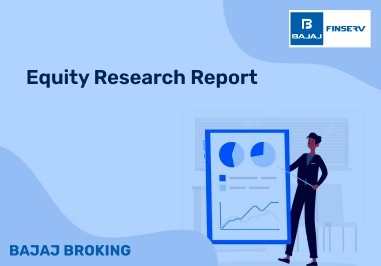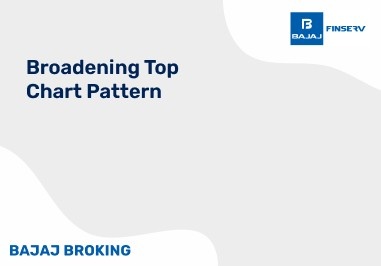Introduction
Investing in index funds has become an increasingly popular strategy for building long-term wealth. Index funds are a type of investment in index funds that track the performance of a specific market index. By investing in index funds, you can gain broad exposure to the stock market while diversifying your portfolio and minimising your risk.
Highlights
- What are index funds and how do they work?
- The advantages of investing in index funds
- How to choose the right index funds for your goals and risk tolerance
- Steps to set up and manage your index fund portfolio
- Tips for maximising your returns when investing in index funds
What are Index Funds and How Do They Work?
At their core, index funds are investment funds that are designed to track the performance of a specific market index. These indexes are baskets of securities, such as stocks or bonds, that are selected to represent a particular market or sector.
When you invest in index funds, your money is pooled together with other investors and used to purchase the securities that make up the index. The fund's value rises and falls in line with the index it tracks, providing you with diversified exposure to the market.
One of the key advantages of investing in index funds is that they are passively managed, meaning the fund manager doesn't actively pick and choose individual securities. Instead, the fund simply buys and holds the securities that make up the index, which helps to keep costs low.
The Advantages of Investing in Index Funds
Investing in index funds offers a range of benefits that make them an attractive option for investors of all experience levels. Here are some of the key advantages:
- Diversification: By investing in index funds, you can gain exposure to a wide range of securities, which helps to spread your risk and reduce the impact of any individual stock or bond underperforming.
- Low Fees: Index funds typically have lower fees than actively managed mutual funds, as the fund manager doesn't need to spend time and resources researching and selecting individual securities.
- Consistent Performance: Because index funds simply track the performance of a market index, they tend to deliver consistent returns over the long term, often outperforming actively managed funds.
- Simplicity: Investing in index funds is a straightforward and easy-to-understand strategy, making it a great option for beginner investors or those who want a more hands-off approach to investing.
- Tax Efficiency: Index funds often have lower turnover rates than actively managed funds, which can help to reduce capital gains taxes and make them more tax-efficient.
Choosing the Right Index Funds for Your Portfolio
When investing in index funds, it's important to choose funds that align with your investment goals and risk tolerance. Here are some factors to consider:
- Index Tracked: Different index funds track different market indexes, so you'll need to decide which index best aligns with your investment objectives..
- Fund Fees: As mentioned earlier, one of the key advantages of investing in index funds is the low fees. Look for funds with expense ratios (the annual cost of owning the fund) that are as low as possible, typically under 0.20%.
- Fund Size and Liquidity: Consider the size of the fund and its trading volume, as larger and more liquid funds tend to be more stable and easier to buy and sell.
- Risk Tolerance: Different index funds have different levels of risk, depending on the underlying index they track. If you have a lower risk tolerance, you might consider a fund that tracks a broader, more diversified index.
- Asset Allocation: When investing in index funds, it's important to consider how they fit into your overall asset allocation strategy. You may want to diversify your portfolio by investing in index funds that track different asset classes, such as stocks, bonds, and real estate.
Steps to Set Up and Manage Your Index Fund Portfolio
Setting up and managing an index fund portfolio can be a straightforward process, but it's important to take the time to do it right. Here are the steps to get started:
- Determine Your Investment Goals: Start by defining your investment goals, such as retirement planning, saving for a down payment on a home, or building wealth over the long term.
- Assess Your Risk Tolerance: Consider your risk tolerance and time horizon, as these factors will help you determine the appropriate asset allocation for your portfolio.
- Choose Your Index Funds: Based on your investment goals and risk tolerance, select the index funds that you want to include in your portfolio. Remember to diversify across different asset classes and sectors.
- Open an Investment Account: Once you've chosen your index funds, you'll need to open an investment account, such as a brokerage account or a retirement account.
- Regularly Review and Rebalance: Periodically review your portfolio and rebalance it as needed to maintain your target asset allocation. This can help you keep your risk level in check and ensure that your investments are aligned with your financial goals.
How to Invest in Index Funds in India: Step-by-step Guide
Are you interested in investing in Index Funds but unsure about the process of purchasing index funds in India? This guide covers the essential steps for both online and offline investment methods.
Online Process
STEP 1: Initiate by opening an account on a reliable mutual fund platform of your choice.
STEP 2: Complete your KYC (Know Your Customer) verification if it’s your first investment.
STEP 3: Input all required details into the system as prompted.
STEP 4: Evaluate your financial goals and select the appropriate index fund or multiple funds based on those objectives.
STEP 5: Proceed to invest by transferring the necessary funds to the chosen index fund.
BONUS STEP: Optionally, arrange a monthly investment plan via SIP (Systematic Investment Plan) by setting up a standing instruction with your bank.
Offline Process
STEP 1: Visit the nearest office of the fund provider to fill out the investment and KYC forms.
STEP 2: Provide all the requested information accurately.
STEP 3: Decide on the index fund or funds that fit your financial profile and goals.
STEP 4: Make the investment by paying via your preferred method, such as cheque or direct transfer.
STEP 5: For regular monthly investments, set up an automatic payment facility like BillPay, eMandate, eNACH, ADF (Auto Debit Form), or OTM (One Time Mandate) either through digital means or in person.
Tips for Maximising Your Returns When Investing in Index Funds
While investing in index funds is a relatively simple and straightforward strategy, there are a few tips that can help you maximise your returns:
- Invest Regularly: One of the keys to successful investing in index funds is to invest regularly, regardless of market conditions. This can help you take advantage of dollar-cost averaging and smooth out the ups and downs of the market.
- Reinvest Dividends: Many index funds pay out dividends, which can be reinvested to purchase additional shares and compound your returns over time.
- Keep Costs Low: As mentioned earlier, one of the key advantages of investing in index funds is the low fees. Make sure to choose funds with low expense ratios to keep your costs down and maximise your returns.
- Diversify Your Portfolio: While investing in index funds provides diversification, it's still important to diversify your overall portfolio by including other asset classes, such as bonds, real estate, and alternative investments.
- Be Patient and Stay the Course: Investing in the stock market can be volatile, but investing in index funds is a long-term strategy. By staying patient and sticking to your investment plan, you can weather the ups and downs of the market and achieve your financial goals.
Conclusion
In conclusion, investing in index funds is a simple and effective way to build wealth over time. By understanding the benefits of index funds, choosing the right funds for your portfolio, and following best practices for management and maximising returns, you can set yourself up for long-term financial success.
Disclaimer: Investments in the securities market are subject to market risk, read all related documents carefully before investing.
This content is for educational purposes only. Securities quoted are exemplary and not recommendatory.
For All Disclaimers Click Here: https://bit.ly/3Tcsfuc













